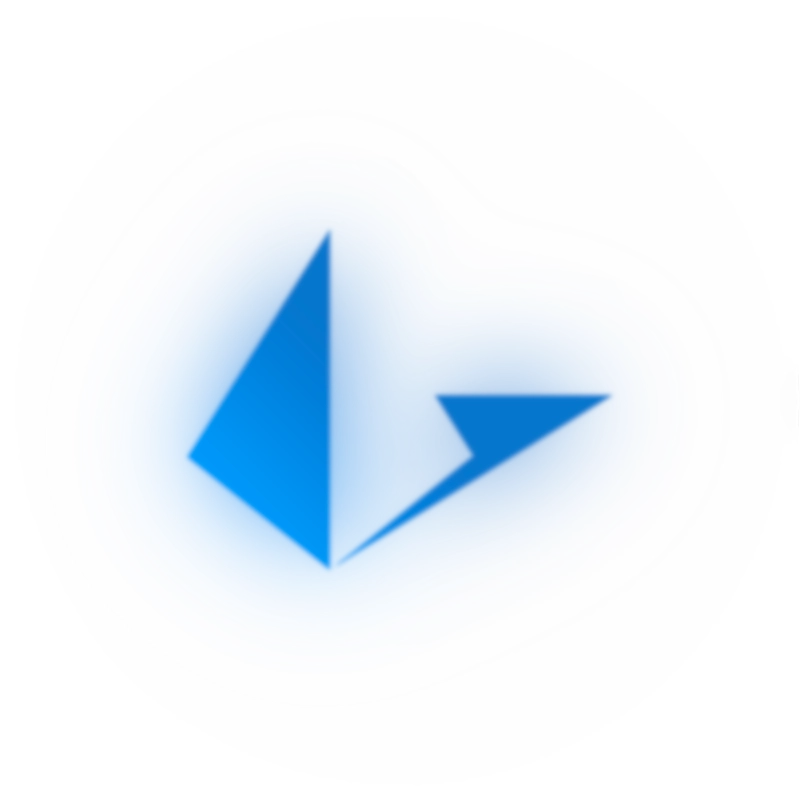Investing in crypto-assets carries risks of liquidity, volatility, and partial or total capital loss. Crypto-assets held are not covered by deposit and securities guarantee mechanisms.


Sign up for our newsletter
Partners
Coinhouse
Our accounts
Coinhouse
Coinhouse SAS with a capital of €210,000, RCS Paris 815 254 545, headquarters: 14 Avenue de l'Opéra 75001 Paris – support@coinhouse.com. Registered with the AMF for activities related to the purchase/sale of digital assets against legal tender, the exchange of digital assets for other digital assets, and the custody of digital assets for third parties under the registration number: E2020-001.
Coinhouse payment solutions
Company registered with the Paris RCS under the number 914 384 557, registered with the Prudential Control and Resolution Authority as a payment service agent under the number 727503 of the electronic money institution Treezor, headquartered at 33 Avenue de Wagram, 75017 Paris.
General conditions, disclaimers and legal documents.



Loopring builds protocols, infrastructure and products for users focused on finance applications.
This project is built on Ethereum, and more specifically on layer 2 (zkRollups) of Ethereum.
Loopring provides a low-gas, high-speed platform for trading, exchange, liquidity provision and payments – without sacrificing the technological attributes offered by the use of Ethereum.
Loopring’s goal is to design and build the best zkRollup exchange and payment protocol on Ethereum, and to operate products that make it available to users worldwide.
The story of Loopring’s creation dates back to 2017, when Daniel Wang, a Chinese computer engineering entrepreneur, founded the Loopring project.
Daniel Wang graduated in computer science from Peking University.
He then obtained a master’s degree in software engineering from the University of Central Florida in the USA.
Prior to founding Loopring, Daniel Wang had a background in the technology industry and the financial world.
He worked for companies such as Google, JD.com and Nuance Communications.
With his background, he then founded Loopring in 2017.
Inspired by the possibilities offered by blockchain technology and the challenges faced by centralized crypto-asset exchanges, his goal was to create a decentralized protocol that would enable users to exchange crypto-assets faster and at no cost using Ethereum’s layer 2 properties.
At the time the project was conceived, the crypto-asset market was booming, but there were serious problems associated with centralized exchanges.
Users were faced with problems of security, theft of funds, lack of transparency and exchange platform failures.
This prompted Daniel Wang to look for solutions to make exchanges safer and more efficient.
Also at the time, the Ethereum blockchain was in Proof of Work, and the costs associated with using such a blockchain could be excessive, and the processing time incompatible with financial use (trading, for example), which could have requirements in terms of exchange volume, exchange speed and reduced costs for the latter.
This led to the publication of the whitepaper: In August 2017, this whitepaper describes in detail how the protocol works and its potential benefits for crypto-asset users.
Its whitepaper can be found at the following link https://loopring.org/resources/en_whitepaper.pdf, which looks more specifically at how exchanges work (centralized and decentralized) , their strengths as well as their weaknesses.
In order to launch its project, Loopring managed to raise funds in the form of an ICO to develop and launch Loopring.
Loopring’s ICO (Initial Coin Offering) was launched in August 2017 to finance the project’s development.
During this period, the LRC token was sold to investors to raise funds.
On this fundraising :
 Who are Loopring’s investors? Loopring managed to raise an impressive $87 million in total, spread over the years 2017, 2018 and 2019.
Who are Loopring’s investors? Loopring managed to raise an impressive $87 million in total, spread over the years 2017, 2018 and 2019.
The Chinese company received financial backing from seven investors, including names such as Kosmos Ventures, China Growth Capital and NEO. 
Loopring is a protocol based on Ethereum’s layer 2.
It should be noted that the “zk-Rollup” technology is at the origin of the Loopring protocol.
This saves users time and money when using the Loopring system. Loopring live course.
A “layer 2” in blockchain refers to a scaling solution designed to improve the performance and efficiency of existing blockchains, primarily by reducing congestion and transaction costs, while preserving the security and decentralization of the underlying blockchain (usually referred to as “layer 1”).
Layer 1 blockchain networks, such as Ethereum, Bitcoin (live Bitcoin price), and others, often face scalability issues, as they have to process large numbers of transactions and smart contracts.
Layer 1 blockchains are generally slow and costly in terms of transactions.
This is where the concept of layer 2 comes in.
Layer 2 solutions are protocols or networks built on top of the layer 1 blockchain to handle certain operations outside the main chain.
Compared with other blockchains, Loopring uses a particular layer 2, as it is open source and non-custodial.
This principle is crucial to understanding zkrollup.
zkRollup, or Zero-Knowledge Rollup, is a technique used in blockchains to improve their efficiency in terms of transaction speed and costs, while maintaining a high level of security and decentralization.
It is based on two key concepts: “Rollups” and “Zero-Knowledge Proofs”.
Rollups (or Aggregation): Rollups are a blockchain scaling technique that involves aggregating multiple transactions into a single transaction, thereby reducing the network’s workload.
The data from these aggregated transactions is stored outside the main blockchain, reducing network congestion.
Zero-Knowledge Proofs: Zero-Knowledge Proofs are cryptographic methods that allow one party (the verifier) to verify that an assertion is true without needing to know the specific details of that assertion.
In other words, they allow you to prove that you know certain information without revealing the information itself.
zkRollup combines these two concepts in the following way: Transactions are aggregated outside the main blockchain (layer 1), which significantly reduces the network workload.
Instead of storing the entire transaction data outside the blockchain, only the total sums are recorded on the main blockchain.
To guarantee the integrity and validity of transactions, zero-knowledge proofs are used.
These proofs prove that aggregated transactions are valid without having to disclose the details of each individual transaction.
In other words, the master blockchain doesn’t need to know the specific transaction data, but it can still verify their validity.
The advantage of zkRollup lies in the fact that it significantly improves the efficiency and speed of transactions on a blockchain, while maintaining a high level of security and decentralization.
It is particularly used to enhance the performance of blockchains such as Ethereum, reducing transaction costs and increasing network capacity, while preserving the integrity and confidentiality of user data.
Thanks to this use, users can use the LRC token and benefit from Loopring projects.
A decentralized exchange (DEX), in the context of crypto-assets, is a platform that enables users to exchange assets directly with each other without the need for a centralized intermediary such as a traditional exchange.
DEXs rely on blockchain and smart contract technology to facilitate and automate the exchange process.
They thus offer an alternative to centralized exchanges, where users have to entrust custody of their funds to a third-party entity.
DEXs operate without a central control entity.
Instead, they use smart contracts deployed on a blockchain, often on networks such as Ethereum.
These smart contracts manage order execution and liquidity. Smart contracts are self-executing computer programs that define the rules of exchange.
In the context of DEX, these contracts automate the matching of orders and the exchange of assets between parties.
Unlike centralized exchanges, DEXs do not require users to retain custody of their funds.
Users retain full control of their assets, reducing the risk of piracy or mismanagement of funds.
DEXs often enable exchanges between different crypto-assets.
Users can create direct exchange pairs between two assets without the need for an intermediate pair, offering greater flexibility.
Liquidity on DEXs is provided by liquidity providers, who may be mainstream users.
Financial incentives, often in the form of fees, are used to encourage liquidity providers to contribute to DEX operations. How DEX works: Users deposit funds directly from their personal portfolios onto the DEX platform.
These funds remain under the control of users thanks to the decentralized nature of the blockchain.
Once the funds have been deposited, smart contracts on the blockchain manage the trading process.
These contracts determine order matching and transaction execution.
Users can place buy or sell orders directly on the DEX platform.
Orders are recorded in smart contracts, and trades are automatically executed when matching orders are found.
Another classic DEX operating format is the Automated Market Maker (AMM).
Automated Market Makers (AMMs) are decentralized protocols used in decentralized exchanges (DEX) to facilitate the provision of liquidity and the execution of automatic trades without the need for a traditional order between buyer and seller.
AMMs are at the heart of many DeFi protocols, and rely on automated algorithms to determine prices and exchange ratios.
Liquidity providers who deposit their funds on the platform are rewarded in the form of transaction fees.
This encourages user participation and helps maintain liquidity on the platform. At any time, users can withdraw their funds from the platform using their personal portfolios.
DEX does not retain custody of users’ funds. Advantages of DEX: Since users retain control of their funds, the risk of the platform being hacked is considerably reduced compared with centralized exchanges.
DEXs correspond to the decentralized ideal of crypto-assets, eliminating the need for a centralized trusted third party.
DEXs offer greater accessibility, enabling users from all over the world to exchange assets without having to go through complex registration processes.
Users can create exchange pairs between a variety of digital assets, offering greater flexibility in transactions.
All transactions on the blockchain are transparent and verifiable, reinforcing users’ trust in the exchange process.
DEXs can sometimes face liquidity issues, particularly for less popular assets.
DEXs can be more complex for unsophisticated users than more user-friendly centralized exchanges.
The speed of execution of DEX transactions can sometimes be limited by the constraints of the underlying blockchain.
Decentralization means that users take responsibility for the security of their funds, which can be a challenge for less technically proficient individuals.
DEXs represent an important development in the crypto-asset ecosystem, offering a decentralized alternative to traditional exchanges.
Although they offer advantages such as enhanced security and decentralization, challenges remain, particularly with regard to liquidity and complexity of use.
However, with the continued development of blockchain technology, DEXs are set to play an increasingly important role in the world of digital assets.
A liquidity pool is a pool of tokens held by users in a smart contract.
These tokens are used to provide liquidity to decentralized exchanges (DEX).
Liquidity pools are essential to the operation of DEXs.
They enable users to exchange digital assets without having to go through a centralized intermediary, such as a traditional exchange platform.
Liquidity pools typically consist of two digital assets, but can also contain more.
Digital assets are usually deposited in the pool in pairs, for example ETH/USDC or BTC/USDT.
Users who provide liquidity to a pool are called “liquidity providers”.
Liquidity providers receive a commission on trades made in the pool.
TECHNICAL DATA
| TVL (Total Value Locked) | $ 100 m |
|---|---|
| Safety and Audits | Audit |
| Daily transaction volume | 20 million (24h) |
| Compatible wallets | Ledger Live, MetaMask, Wallet connect, etc. |
The Loopring protocol is powered by its native LRC token, which was launched in 2017.
Among other things, the token is used to pay transaction fees on the Loopring DEX, 80% of which is redistributed to liquidity providers, and the remaining 20% is split between Loopring’s insurance fund and the DAO .
The LRC token is an ERC-20, which can also be used on all DApps (Decentralized Applications) on the Ethereum blockchain, not just on the Loopring DEX.
Loopring’s main mission is to merge elements of centralized and decentralized crypto-asset exchange platforms to create a protocol that leverages the advantages of both types of platform while eliminating inefficiencies.
Currently, centralized exchanges dominate the crypto-asset exchange services sector.
Although these platforms are very popular and accessible, their use entails several risks, principally the safekeeping of user funds, exposing these funds to potential loss in the event of hacking, malicious acts within the platform or regulatory intervention.
Another major problem with centralized platforms is the lack of transparency.
The fact that orders are not settled on the blockchain, but rather stored in the platform’s internal ledgers, opens the door to price manipulation and fraudulent use of user funds.
To address these issues, decentralized exchange platforms (DEXs) have emerged, eliminating the need to store funds and ensuring transparency by settling transactions on a public blockchain.
However, despite these advantages, DEXs also have drawbacks such as lower efficiency compared to centralized platforms, limited capacity of the underlying blockchains and fragmented liquidity.
To start trading on a Loopring exchange platform, users must first send their funds to a smart contract managed by the Loopring protocol.
From there, Loopring exchange platforms perform the necessary calculations to complete transactions outside the main Ethereum blockchain, including information such as user account balances and order history.
Loopring then settles transactions on the Ethereum blockchain to finalize transactions between users who were initially matched off-chain.
These transactions are grouped together to reduce costs and increase speed, with Loopring claiming to be able to perform over 2,000 transactions per second using this technique.
Each batch of transactions is then added to the Ethereum blockchain with zero-knowledge disclosure proofs, enabling anyone to reconstruct transactions that took place off-chain.
In this way, users can be sure that transactions are genuine and have not been tampered with by unwanted parties.
Loopring (LRC) Tokenomics Overview
Key Utilities:
Objective:
LRC’s tokenomics are designed to enhance security, incentivize ecosystem participation, and maintain long-term value.
Loopring is an interesting project because it offers an efficient solution for fast, low-cost cryptocurrency transactions, thanks to its zkSNARK rollup technology on Ethereum Layer 2.
This reduces gas costs and improves transaction speed without compromising security (thanks to the Ethereum blockchain), making trading more accessible and economical.
Share the article


Download app